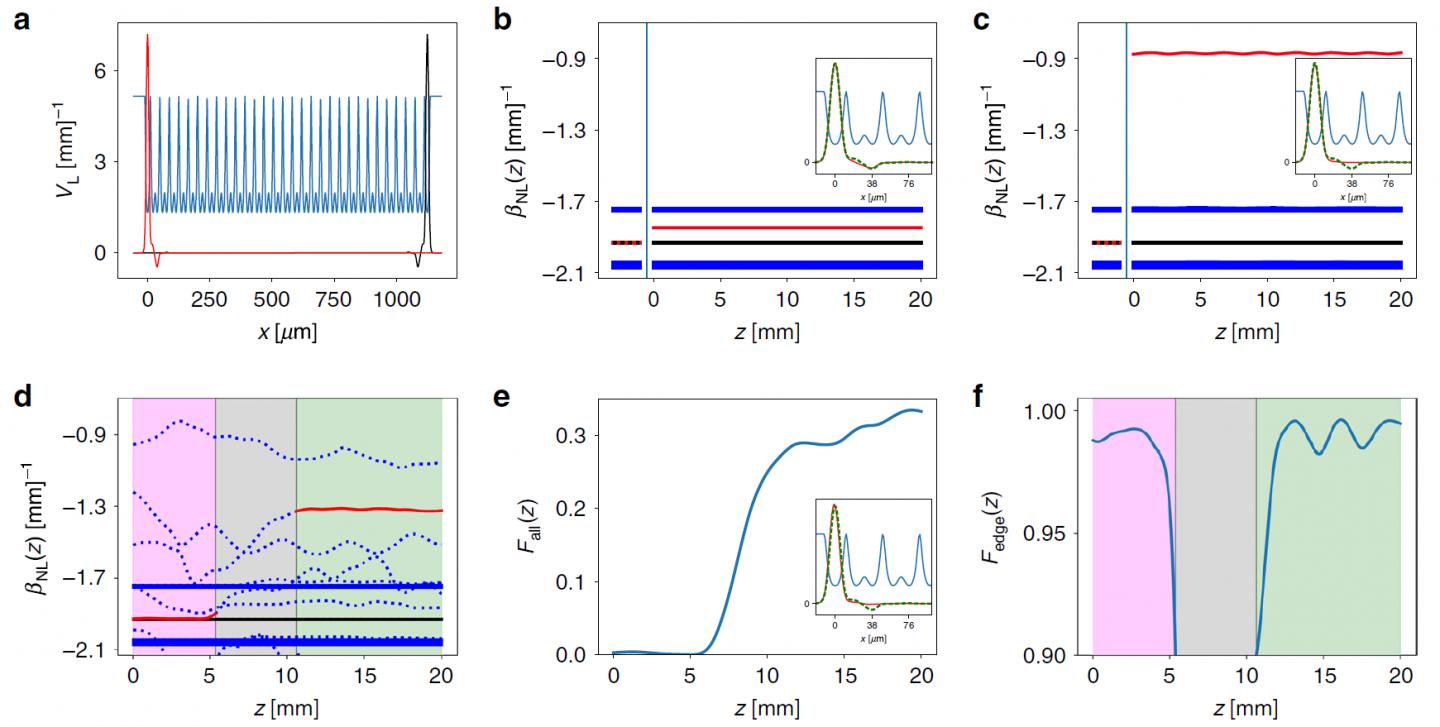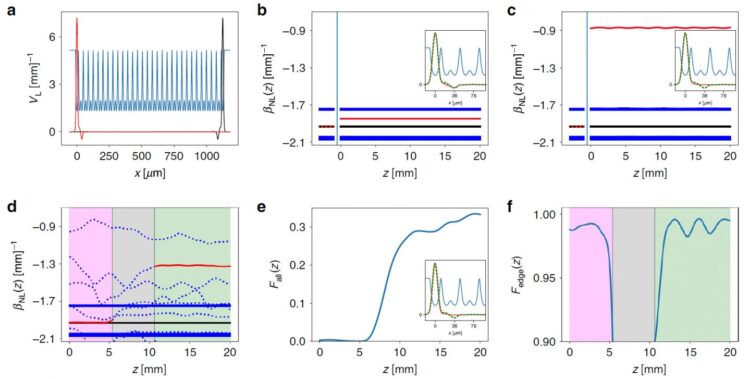
Credit: by Shiqi Xia, DarioJuki?, NanWang, DariaSmirnova, LevSmirnov, Liqin Tang, Daohong Song, Alexander Szameit, Daniel Leykam, JingjunXu, Zhigang Chen and Hrvoje Buljan
The ?ourishing of topological photonics in the last decade was achieved mainly due to developments in linear topological photonic structures. However, when nonlinearity is introduced, many intriguing questions arise. For example, are there universal ?ngerprints of the underlying topology when modes are coupled by nonlinearity, and what can happen to topological invariants during nonlinear propagation? To explore these questions, A new paper published in Light Science & Application, a team of scientists, led by Professor Zhigang Chen from the MOE Key Laboratory of Weak-Light Nonlinear Photonics, TEDA Applied Physics Institute and School of Physics, Nankai University, Tianjin 300457, China and co-workers have experimentally demonstrated nonlinearity-induced coupling of light into topologically protected edge states using a photonic platform and developed a general theoretical framework for interpreting the mode-coupling dynamics in nonlinear topological systems.
The experiment results show the nonlinearity-induced mode-coupling between bulk and topological edge states, as they stated in the text:
“In the ?rst case, the topological defect is located at the SSH lattice edge (Fig. 1, left panels). When a narrow stripe beam is launched straight into the edge waveguide under linear conditions, it evolves into a topological edge state (Fig. 1(a2)). Such an edge state, with a characteristic amplitude and phase populating only the odd-numbered waveguides counting from the edge, is topologically protected by the chiral symmetry of the SSH lattice, as previously observed in the 1D photonic superlattice. On the other hand, when the excitation is shifted away from the edge with a tilted broad beam to pump the defect, we observe that the beam does not couple into the edge channel under linear conditions (Fig. 1b1). However, when the beam experiences a self-focusing nonlinearity, a signi?cant portion of the beam is coupled into the edge channel (Fig. 1b2), indicating that the nonlinearity somehow enables the energy to ?ow from the bulk modes into the topological edge mode of the SSH lattice.”
They have developed a general theoretical framework to explained the nonlinear process of a certain system:
“However, we observe that the interplay of nonlinearity and topology can couple light into the topological edge state of the linear system, which is inadmissible for entirely linear dynamics (e.g., see Fig. 1 (b2) and Fig. 2d-f). When this happens, we can identify
the nonlinear edge mode φ_(NL,edge), which inherits the pro?le of the linear edge mode φ_(L,edge) in the edge channel and is quanti?ed by F_edge (z)?0.98 after the nonlinear coupling has occurred, although it lacks the amplitude in the third waveguide. Thus, for a high nonlinearity, the eigenvalue of φ_(NL,edge) moves outside the gap (see Fig. 2c), and the edge mode is dominated by nonlinearity but has some features inherited from the linear topological edge mode; for a low nonlinearity, its eigenvalue stays inside the gap, so it is dominated mainly by the topology.”
###
Media Contact
Daohong Song
[email protected]
Related Journal Article
http://dx.





